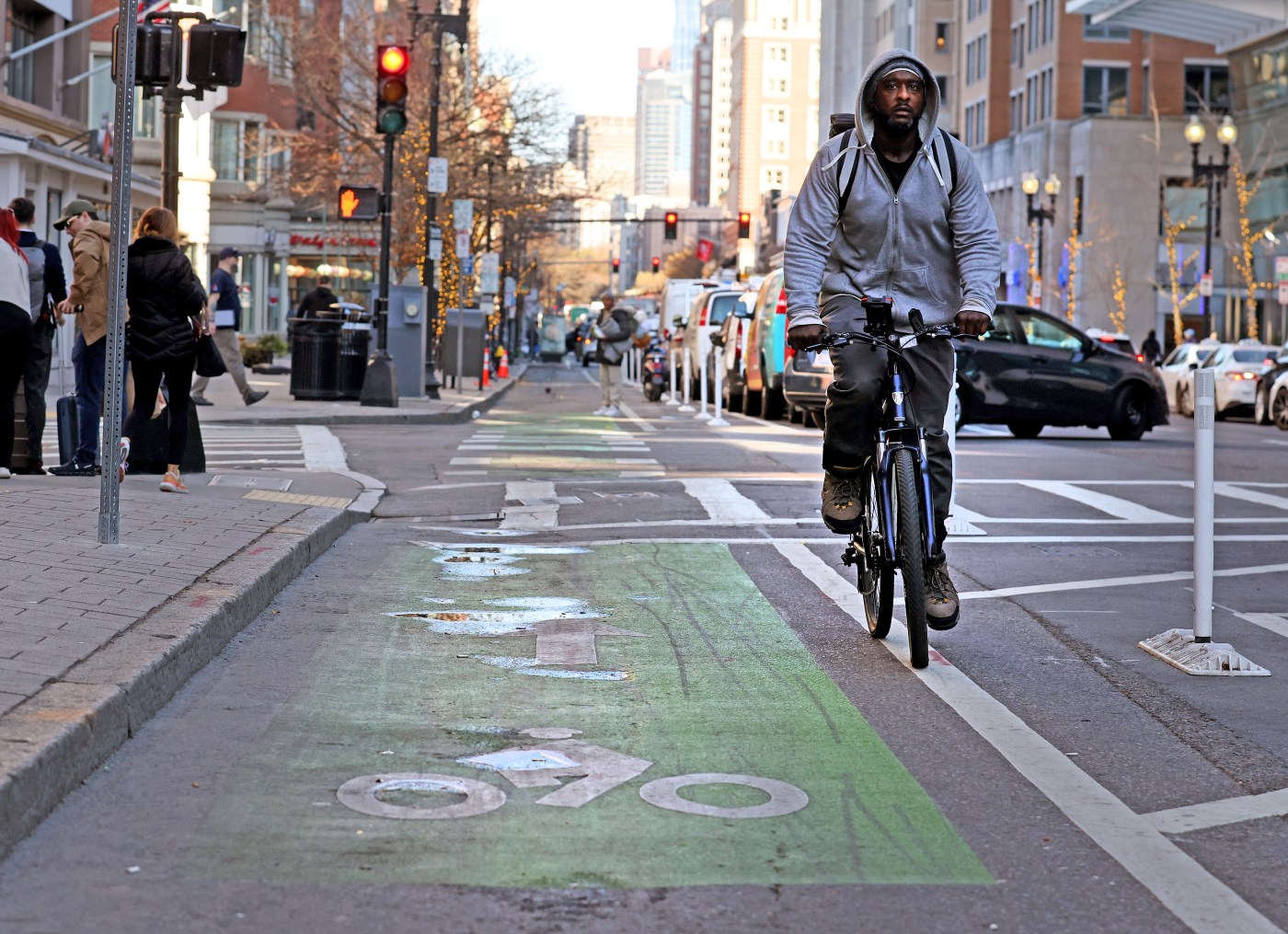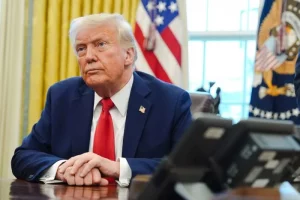
Boston removing Back Bay dedicated bus lane, starting comprehensive review of recent streets changes
A Back Bay dedicated bus lane will be removed as a first step in a neighborhood-guided city revamp of streets and a first round of recommended changes — particularly involving bike lanes — will be coming within a month, the city says.
“As citywide bike infrastructure has been built out piece by piece across the last decade, our administration has had the responsibility to finish several critical links in the network to make them fully usable and safe. These last links are often the most difficult community conversations involving significant tradeoffs,” Boston Mayor Michelle Wu wrote in a Wednesday letter to the Back Bay Association.
The letter announced the removal of the bus lane on Boylston Street that was initially installed as a temporary measure to ferry displaced Orange Line riders during the line’s shutdown in 2022 but was then deemed a permanent fixture last summer.
But observational analysis found that the dedicated lane “has not functioned as intended to justify the space allocation,” as the density of riders was not what it was when the line was down.
The change will be a “very good and important change to the operation of Boylston Street,” Meg Mainzer-Cohen, president of Back Bay Association told the Herald Wednesday.
Mainzer-Cohen was also pleased with Wu’s appointment, announced in the same letter, of Michael Brohel, the city’s superintendent of Basic City Services, to lead a review of roadway changes across the city “and engage with local stakeholders and our engineering teams to identify recommendations for adjustments.” His first slate of recommendations is due to Wu in 30 days.
“We’re really going to work closely with the city to ensure this is a success,” Mainzer-Cohen said.
Wu highlighted the recent history of street redesign in the city beginning with then-Mayor Thomas Menino’s 2013 Boston Bike Network Plan, then Mayor Marty Walsh’s “Go Boston 2030″ transportation visioning process completed in 2017.
“Ultimately, Boston’s 850 miles of roadway must be comprehensively connected and maintained so all community members have safe, convenient, and reliable options to get where they need to go,” Wu wrote.
It is now time, she wrote, “to review what has been installed over the last fifteen years, adjust or redesign what has not been functioning well, and transition successful temporary safety fixes into permanent, beautiful infrastructure.”
Mainzer-Cohen said that her organization has already provided the city with “a list of things that we believe will enable greater functionality of the neighborhood.”
Among those would be a rethinking of the bike lanes already installed in Back Bay, which, Mainzer-Cohen said, are significantly wider than traditional bike lanes and interfere with traffic and the necessities of the restaurants, shops and businesses along corridors with bike lanes.
Another suggestion is removing the bus-only lane that exists for one block of Berkeley Street and another on St. James Avenue, which she says has largely been congested with tourist bus parking and hinders the flow of traffic.
Reporter Gayla Cawley contributed to this report.


